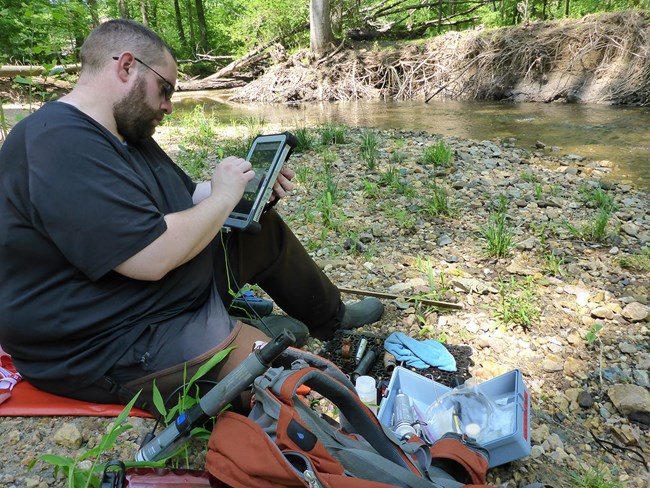
NPS
The National Capital Region Inventory & Monitoring Network monitors air quality, birds, forest pests, vegetation, invasive plants, stream water, and stream fish and macroinvertebrates at Wolf Trap National Park for the Performing Arts. The results of that monitoring provide park managers with scientific information for decision-making.
Wolf Trap National Park for the Performing Arts surrounds a premiere arts venue with a natural oasis of woodlands, streams, wetlands, a native meadow, and ‘no-mow zones’. Less than half of Wolf Trap's land is developed, leaving about 65 acres for a wide variety of plants, animals, birds, and wildflowers.
The park’s main natural resource management concerns are surrounding land use, regionally poor air quality, and overpopulation of deer. Stormwater management is a big concern for stream ecosystems. Regional air quality and land use patterns can have strong effects on park resources.
What's Happening in Wolf Trap
NCRN Monitoring at Wolf Trap by the Numbers
| What We Monitor | Sites at Wolf Trap* | Monitoring Frequency | Information We Collect |
|---|---|---|---|
| Birds – forest only | 6 (forest bird) | Forest plots are monitored twice a year Wetland sites are monitored twice per sampling period |
|
| Forest vegetation | 6 (forest vegetation) | Approximately a quarter of plots each year on a four-year cycle |
|
| Stream biota – fish and macroinvertebrates | At streams listed below | Periodic sampling 2007-2014, 2019-2023 |
|
| Stream water quality | 2 (stream site) on Courthouse Creek and Wolf Trap Creek | Stream sites are monitored every other month |
|
Last updated: May 11, 2023
